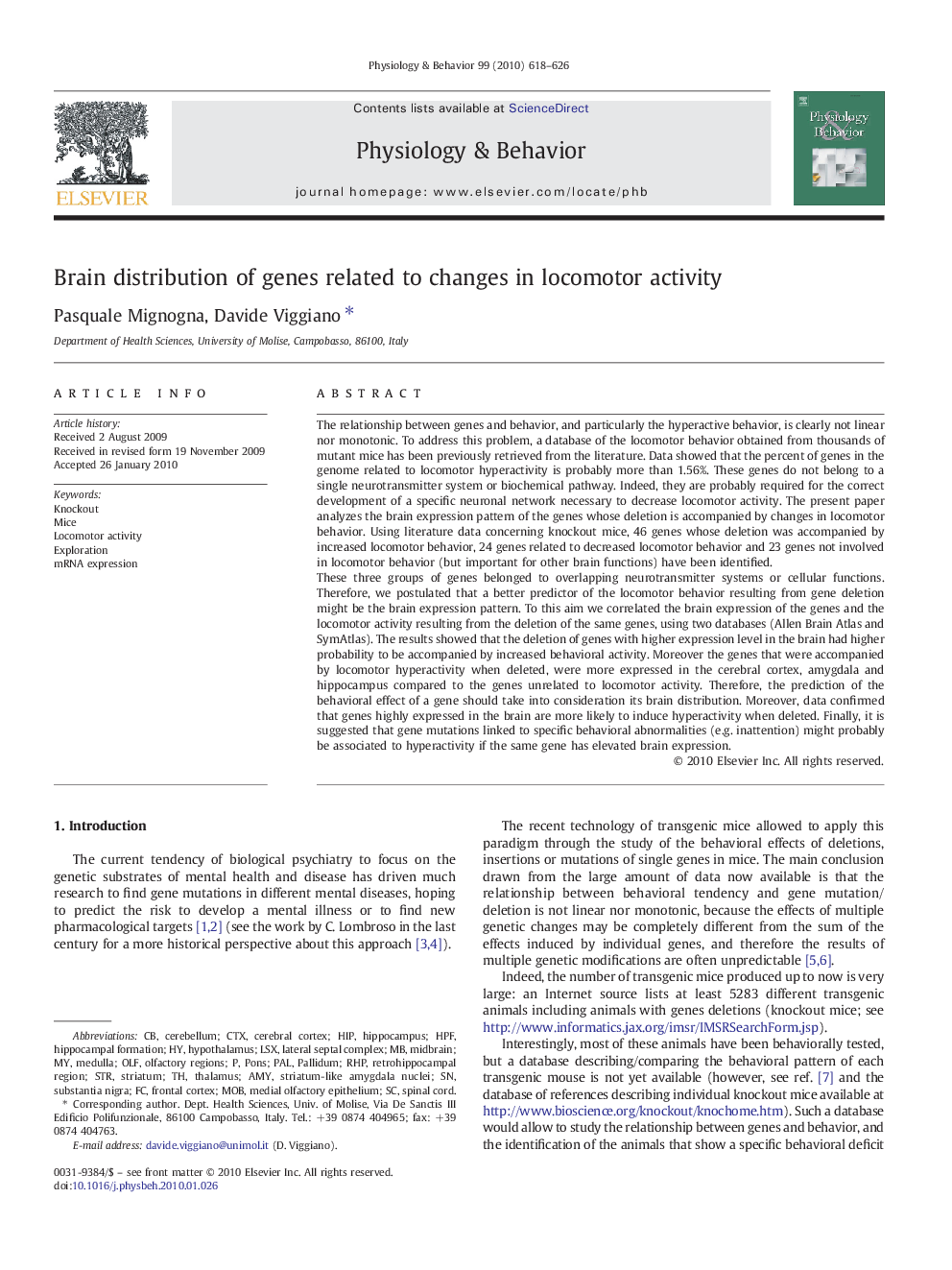| Article ID | Journal | Published Year | Pages | File Type |
|---|---|---|---|---|
| 2844960 | Physiology & Behavior | 2010 | 9 Pages |
Abstract
These three groups of genes belonged to overlapping neurotransmitter systems or cellular functions. Therefore, we postulated that a better predictor of the locomotor behavior resulting from gene deletion might be the brain expression pattern. To this aim we correlated the brain expression of the genes and the locomotor activity resulting from the deletion of the same genes, using two databases (Allen Brain Atlas and SymAtlas). The results showed that the deletion of genes with higher expression level in the brain had higher probability to be accompanied by increased behavioral activity. Moreover the genes that were accompanied by locomotor hyperactivity when deleted, were more expressed in the cerebral cortex, amygdala and hippocampus compared to the genes unrelated to locomotor activity. Therefore, the prediction of the behavioral effect of a gene should take into consideration its brain distribution. Moreover, data confirmed that genes highly expressed in the brain are more likely to induce hyperactivity when deleted. Finally, it is suggested that gene mutations linked to specific behavioral abnormalities (e.g. inattention) might probably be associated to hyperactivity if the same gene has elevated brain expression.
Keywords
Related Topics
Life Sciences
Biochemistry, Genetics and Molecular Biology
Physiology
Authors
Pasquale Mignogna, Davide Viggiano,
